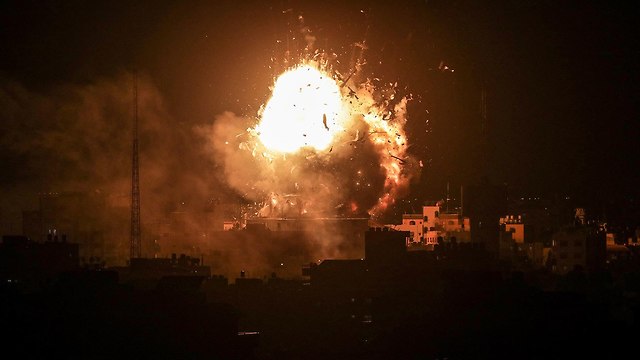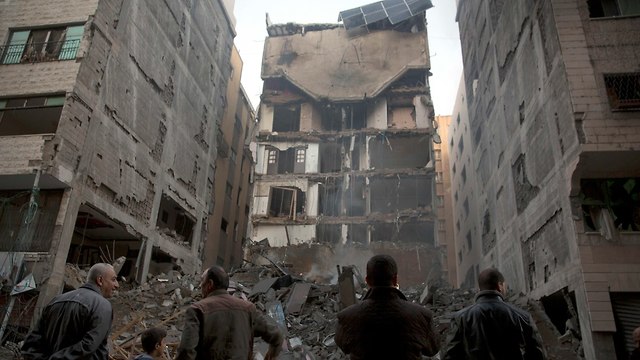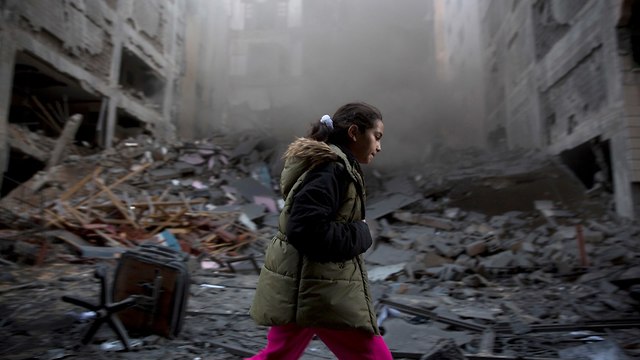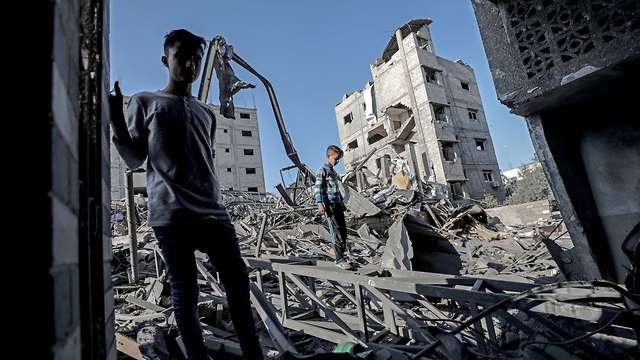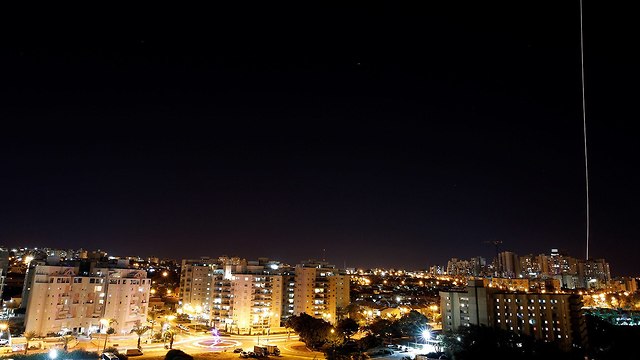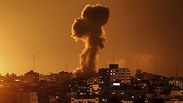

This is not how you create deterrence
Analysis: the current pace of IDF attacks does not affect terrorist organizations; only a sharp, powerful blow, including a fixed ground operation, will make Hamas beg on bended knees; and yes, it will come with a price—Israelis lives will be lost; also, is it time to incorporate laser-based interception systems?
The current round of escalation in the south apparently began with a secret IDF operation in Gaza which went awry Sunday. Hamas and the Palestinian Islamic Jihad quickly took advantage of the opportunity to establish a new deterrence equation in the south. While Israel hesitates to strike Gaza with high intensity in order to restore deterrence in Gaza—it achieves the opposite. The terrorist organizations are responsible for this current round of fighting, since it was these organizations that launched an airstrike in order to enhance Israeli deterrence.
The strike on an Israeli bus and multiple rocket launches at Israel was intended to make Israeli security officials think twice and even three times before bombing targets in the Gaza Strip, including tunnels that can penetrate Israeli territory or weapons manufacture facilities.
All this while Hamas and the Palestinian Front for the Liberation of Palestine (PFLP) continue to conduct an intensive war of attrition against Israel on the border fence, sometimes while launching mortar shells and rockets into the Israeli Negev population.
No Israeli who wishes to live would be willing to let this unbalanced deterrence equation to go on.
Residents of the Gaza region cannot continue to live in a war of attrition at a rising and falling intensity, in which nights are no longer nights and days no longer seem like days. Even if the number of lives this war claims is not high, it does not allow for a regular and steady daily routine.
Therefore, the task of the political echelon, the IDF and the intelligence community is simple: act in a manner that will rehabilitate deterrence, and at the same time, send a clear message to Hamas and let its members know that the price they will pay will be high if they try to impose new game rules that will paralyze the IDF's ability to provide the residents of the Negev with a sense of security.
The pace of IDF operations and its pattern of action on Monday and Tuesday will not achieve this goal. Surely, the measured and slow impact on military targets and empty high-rise buildings used by Hamas's combat mechanisms will not achieve deterrence.
The IDF is making the classical mistake known in military history as "a war in installments": too little and too slow to have an effect on the enemy's ability and will. When an effective fire strike is launched from the air it must be done at once and in a continuous sequence, in such a way that will leave the enemy gasping for air and wondering what would come next.
Hamas should beg for a cease-fire backed by the Palestinian Islamic Jihad (PIJ), and not leave the negotiating table every few hours while sending threats to Israel, as if it were the strong side that can dictate the conditions its surrender to Israel.
This is not a matter of Israeli machismo or ego. As long as Hamas does not beg for a cease-fire, Israel will have no deterrence against the terror organization, and then there will be no chance for calm or a long standing arrangement.
Israel must be ready to let IDF forces into the Gaza Strip since it is simply impossible to stop the rocket launching into Israel without physically being on the ground, especially when the terrorists responsible for launching these rockets are hiding underground. To restore deterrence without completely destroying the Hamas regime, there is no need to stay in Gaza long after the mission is complete. A quick and powerful attack that will destroy or seriously disrupt the fighting capabilities of Hamas and the PIJ will suffice.The Israeli public must understand this and draw the necessary conclusions. In other words, we are in no-win war that also involves losses for our forces.
Required: laser
It is worth noting the increasing number of rockets fired from Gaza, penetrating the active defense system of Iron Dome, and causing casualties and damage to communities in the south.
The scale of this phenomenon is not yet alarming, but it is increasing and is an indication of what may happen in the future if Hamas and Islamic Jihad succeed in obtaining accurate rockets in large numbers. That would be a real problem.
It can be said that an active defense using interception missiles (Iron Dome, David Sling, etc.) is in the process of exhausting its capabilities. The only system that can replace these systems is a laser-based interception system, which are cheaper to operate and much more effective against rocket and missile barrages.
Laser-based interception systems use a laser that operates with a solid crystal (instead of a chemical laser that is not practical for use in the modern battlefield). The difference between the two laser methods cannot be explained at length, but Israel is working on developing solid crystal laser systems. To my knowledge, some of the developments are already in advanced mode.
However, a substantial budgetary investment is now needed to complete its development and make it operational. The State of Israel must already take action and push for an operational laser system for intercepting rockets and missiles. What former Defense Minister Amir Peretz did to the Iron Dome system, current Defense Minister Avigdor Lieberman can and should do to the laser-based interception system.














